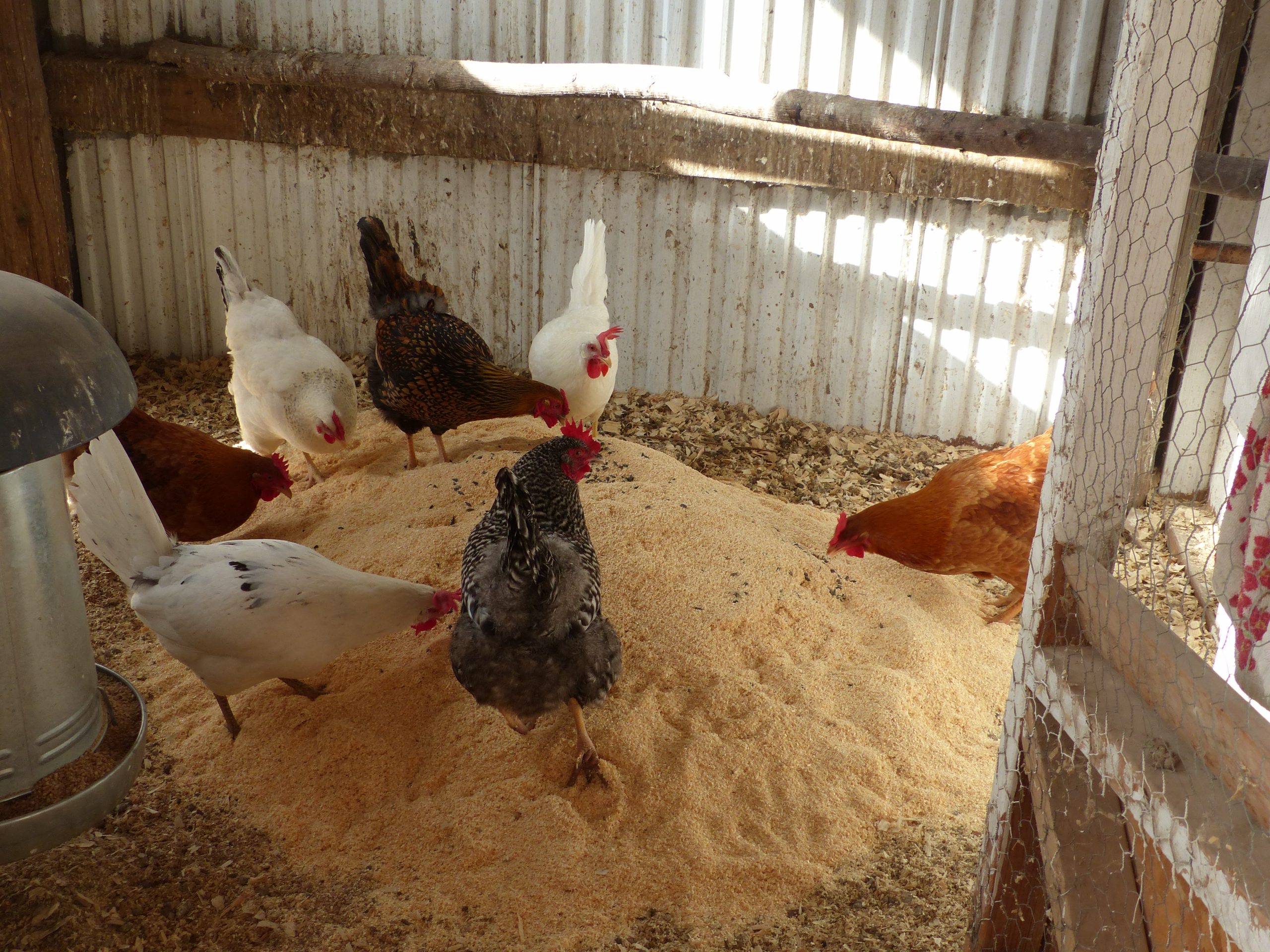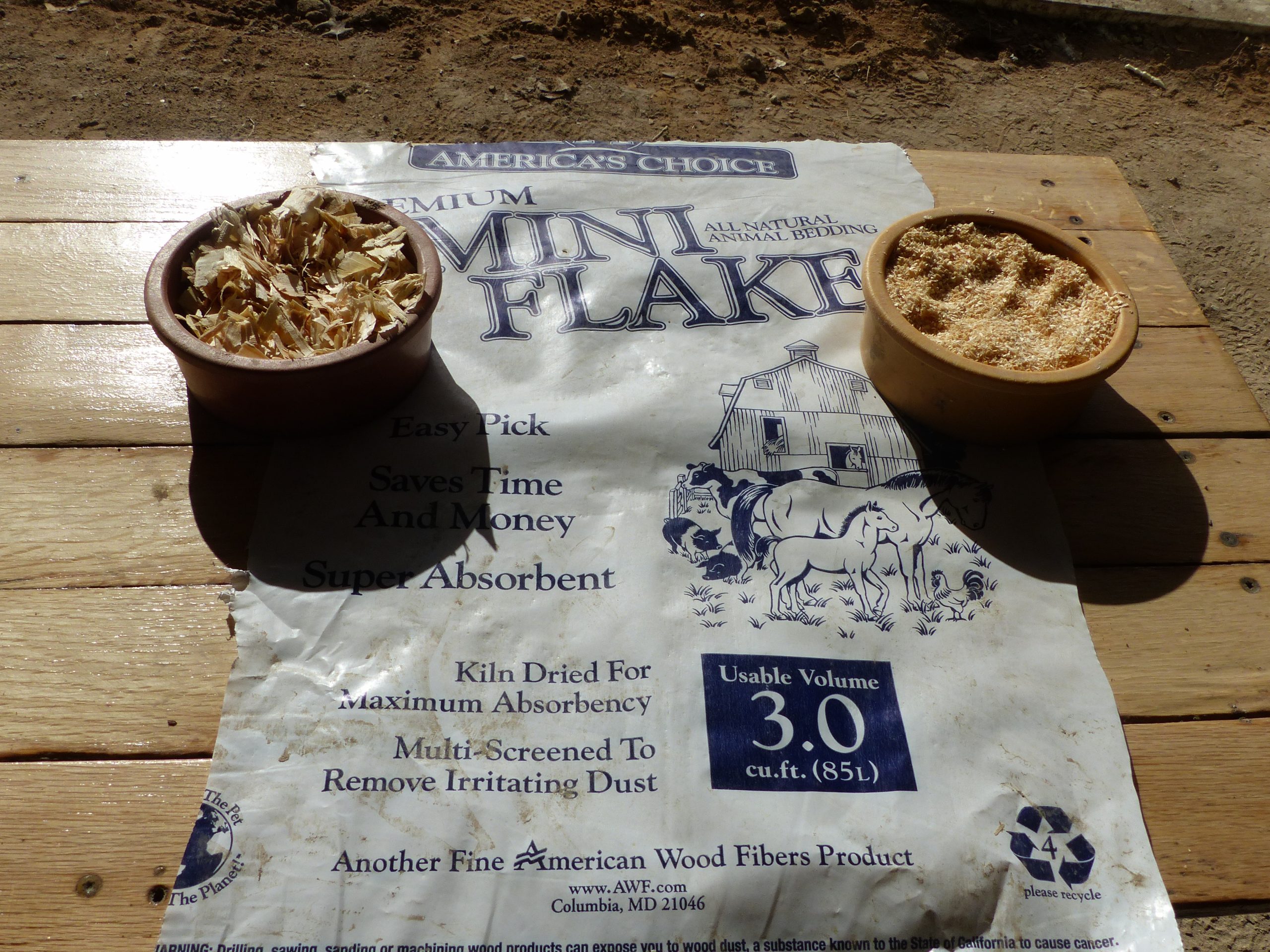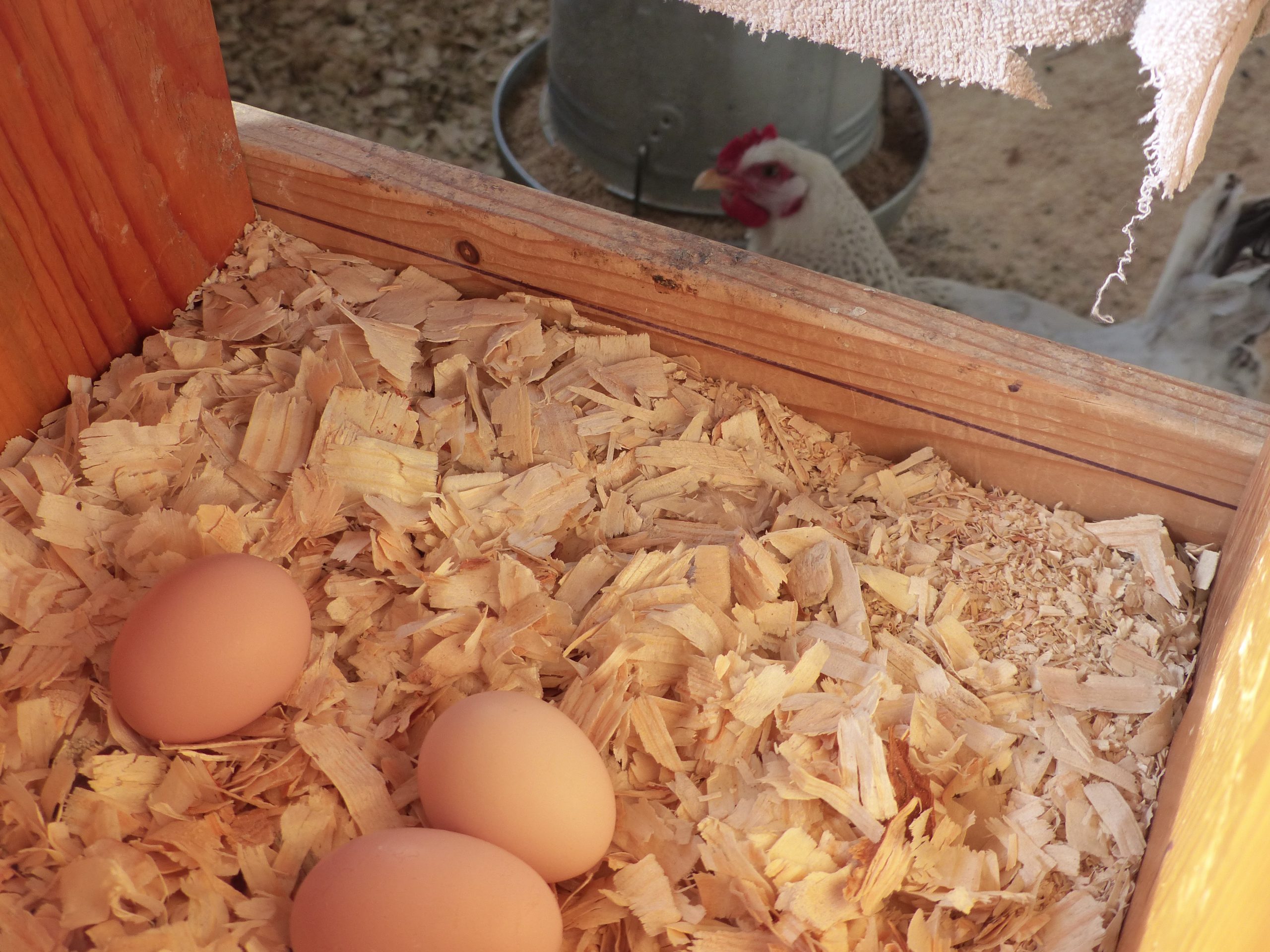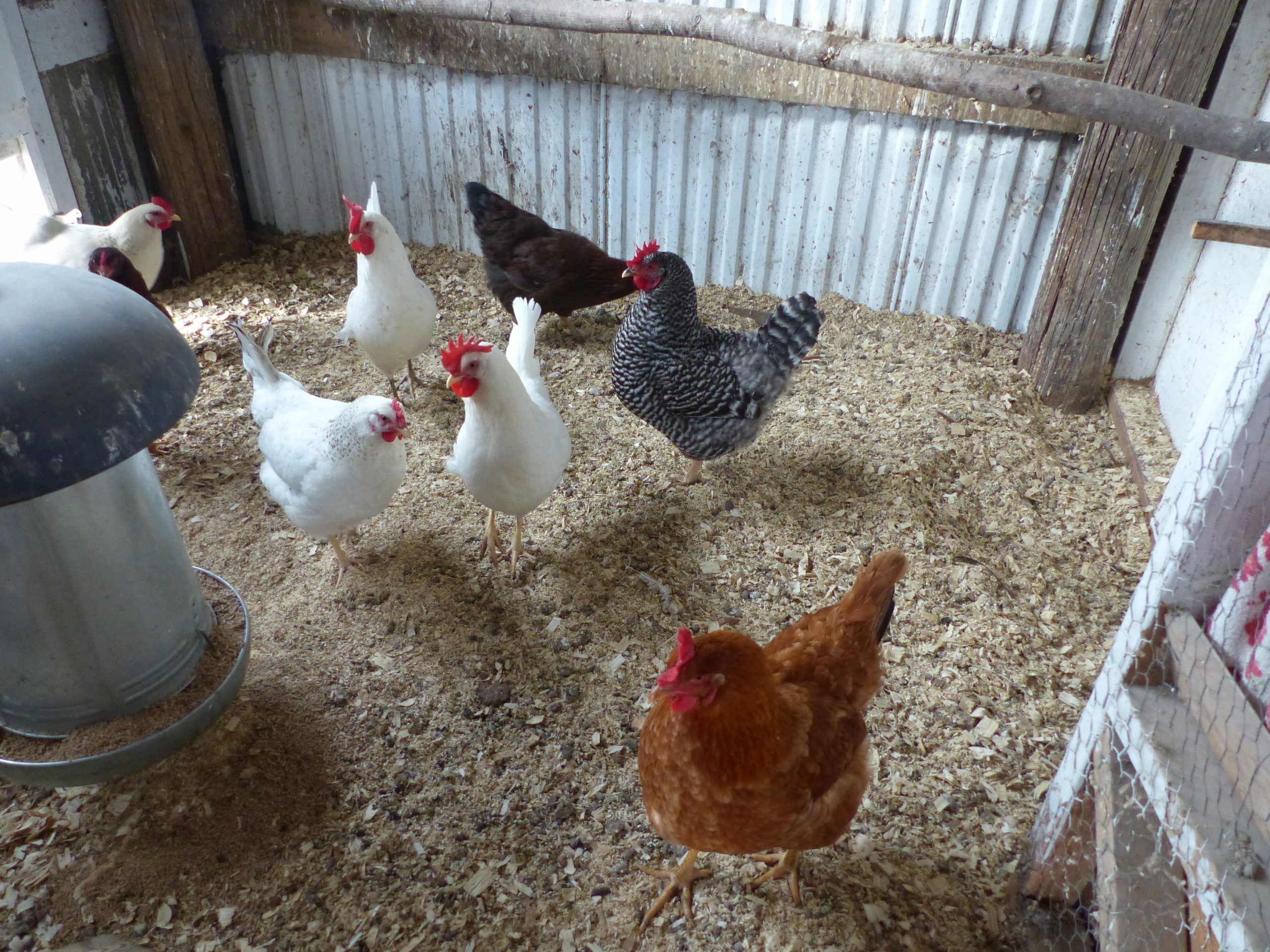“Bedding” means soft wood chips or straw in a horse or cow’s stall. But if the same material is in a chicken coop it’s “litter.” That seems weird.
When applied to chickens the word “litter” has nothing to do with trash scattered along a road. The word is derived from the ancient Latin lectos which meant “bed” and was used to describe a flat platform carried by husky men with the emperor riding on top. The French changed the word to litiere and used it differently. French linguist, Mark Norlander, translated it to mean, “a bed of soft and insulating organic matter spread in buildings as a place for animals to lay down.” Anglicized to litter, it means one of many items put on a coop’s floor to absorb manure and make walking and dusting pleasant for chickens. Oddly, litter also lines a cat’s toilet and what we call new born kittens.

Sand, straw, dry leaves, ground corn cobs, sawdust and wood fibers are all used for litter. Sand is heavy and hard to handle, while straw and leaves mat down and get soggy. Ground up or pelletized corn cobs work well but are expensive. That leaves wood fibers as the most common, and usually best, chicken litter. Buying and using it can be confusing.
Texture and Size Are Important
Feed stores sell bags packed with chopped up wood to be used for litter. Its texture varies from finely pulverized fibers nearly as powdery as flour to chunky flakes about an inch long. What’s best?

Texture makes a difference. Flakes are ideal for lining nests. They resist getting scratched out when hens are in the nest laying and make a oft cushion to reduce egg breakage. Flakes can also be used on the floor, but finer ground wood fibers are more absorbent and easier to compost. A blend of fine and coarse wood fibers works well.
The tree species that wood fibers are made from also makes a difference. Feed stores often sell litter made from aspen, pine, and red cedar. Aspen’s a white wood with almost no aroma. Red cedar is aromatic and breaks down slowly in the soil. It’s also expensive and is best avoided. Pine is most common. Often it is identified as “yellow pine” on the package but this can mean one of many species. If processed in a southern mill it’s likely made from Loblolly Pine. It works well and has a faint pine fragrance. If the litter came from a mill in the Black Hills it’s probably from Ponderosa Pine and has a more pronounced pine aroma that’s delightful in the coop.
Bird Droppings Are Unusual
Moisture is the bane of stalls and coops. Wet bedding, litter, and manure smell. Horses, cattle, and most pets produce plenty of liquid urine. Their saturated bedding needs to be replaced often. No so with chickens. Birds don’t excrete liquid urine. Their pee is a thin dry mineral coating over their somewhat moist poop. When the mixture falls into litter it disintegrates into a dry powder that blends with wood fibers. Because it’s dry, there’s no need to change it often, making caring for chickens easier than many other animals.

An Annual Litter Management Plan
Litter can be managed in many ways. Below is a plan that works well:
- Keep it dry: If the roof or a waterer leaks, fix the leak, remove and compost the wet litter and replace it with dry wood fibers.
- Replenish the litter from time to time. Add an inch or two of new wood fiber to the top of the old litter every few months.
- Spring and Fall: Remove old litter from the coop. Either place it in a composter (best) or dig it into garden soil. It can also be used as mulch around shrubs. Composting it for six months will break it down into an outstanding soil builder.
Litter is dusty and not good to breathe. Wear a dust mask when handling it and wash up when done. And, before eating.
Used Litter Makes Garden Plants Leap
Everyone knows that a backyard flock lays the most delicious eggs. Some families also butcher and eat their old hens. These the obvious chicken benefits, but old litter may even be more valuable. It’s a lucky garden that receives it.

Wood is highly lignified. It’s mostly cellulose. Add it to the soil straight, and decomposition can rob the soil of nitrogen. However, when wood is mixed with dried nitrogen-rich chicken poop it decomposes quickly and adds nutrients to the soil that help plants thrive. According to agronomist Dr. Jean Contina the smaller the wood fibers are the quicker they will decompose and add nutrients to the soil.
Although aged litter removed from the coop can be immediately added to garden soil, it’s best to compost it for a few months to accelerate decomposition.
Litter is valuable. It’s not trash along the road. While in the coop it makes life comfortable for the chickens as it absorbs droppings. When the chickens are done with it garden vegetables thrive in the mixture of nitrogen rich droppings and decomposed wood fibers.
Litter – an odd word with many meanings.